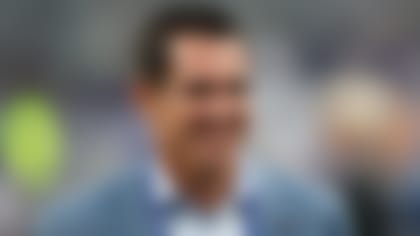WASHINGTON -- For more than 20 years, Dr. Gerard Gioia has treated children with brain injuries. For the past seven, he's focused his research on concussions in youth sports.
He has noticed significant strides in that field lately -- thanks, at least in part, to the focus on helmet hits and concussions in the NFL.
"What is amazing about this is how, over the last year, with the attention that's been brought to the issue by the NFL, the whole field has just vaulted forward," said Gioia, director of a concussion program at the Children's National Medical Center. "In 2003, I had to convince families that this injury was something they needed to be concerned about. Now I have families coming to me, asking mostly the right questions and prepared to deal with the issue in ways so much ahead of where we were."
Gioia, an associate professor at the George Washington University School of Medicine, was among the experts invited to speak at a "Youth Sports Safety Summit" hosted by the National Athletic Trainers' Association (NATA) on Capitol Hill on Tuesday, a day before the NFL's head, neck and spine committee meets in New York. Gioia and other experts agree there has been a trickle-down effect from the pros to youth sports, where progress is being made.
Last month, for example, Pop Warner -- the nation's oldest and largest youth football organization -- announced it will require a note from a doctor before letting a player with a head injury return to action. Also in November, the American Academy of Neurology recommended that a qualified athletic trainer be present at all adult and children's games and practices.
There is more work to be done, though, according to NATA. Gioia has been working to develop the same sort of neurocognitive computerized testing tools that the NFL mandates for players for teenagers and even younger children who might have a concussion.
"The NFL is the tip of the iceberg, and it shines an important light," Gioia said. "But if you look at the volume of kids playing youth sports -- not just football, but all youth sports -- there's 30 to 45 million kids playing, and they have the least-available sports medical knowledge and services."
Dallas-based NATA, a professional membership association, is concerned about concussions among young athletes, as well as the risk of injury from heat illness, sudden cardiac arrest and sickle cell trait. NATA offers some striking statistics:
» More than 45 young athletes have died this year;
» About 8,000 children are treated in emergency rooms each day for sports-related injuries;
» Only 42 percent of high schools have access to athletic training services.
"Youth sports participants are almost the forgotten population," NATA president Marjorie Albohm said. "We've neglected a large amount of young people over the past years, and now it's time to change that."
She hoped the event on Capitol Hill would spur Congress, which is considering legislation in response to evidence that improperly treated concussions can cause long-term physical and mental problems.
While the NFL has said there are an average of 1.5 to two concussions in each of its games, that sort of data isn't readily available for youth leagues -- in football or other sports.
"You can't introduce interventions -- you can't say, 'This is what we need' -- unless you know what injuries are happening," Albohm said.
Ohio State University College of Medicine associate professor Dawn Comstock would like to change that at the youth level. Her work with the National High School Sports-Related Injury Surveillance Study aims to record injuries in 20 sports at 200 high schools around the country.
That data has been used to produce about 20 studies, including one last year that showed perhaps 40 percent of high school athletes return to play too soon after a concussion. A study to be published next month in the peer-reviewed Journal of Athletic Training -- NATA's official academic journal -- shows that male and female athletes complained of different symptoms from concussions.
"We expected girls would report a larger number of symptoms, and their symptoms would take longer to resolve," Comstock said.
Instead, she said, the number of symptoms, the time it took for those symptoms to go away, and the return-to-play times were pretty much the same for boys and girls. What was different was the types of symptoms.
"A girl complaining of sensitivity to light or difficulty sleeping is just as likely to have a concussion as a boy who complains of memory loss or dizziness," Comstock said.
She said the NFL recently contacted her about the possibility of setting up a surveillance system to track injuries in youth football.
"We know a lot about what happens in the pros. And we know a lot about what happens at the college level. Now we know a lot about what's happening at the high school level," Comstock said. "No one knows anything, really, about what's going on with injuries to younger kids playing football."
Copyright 2010 by The Associated Press



